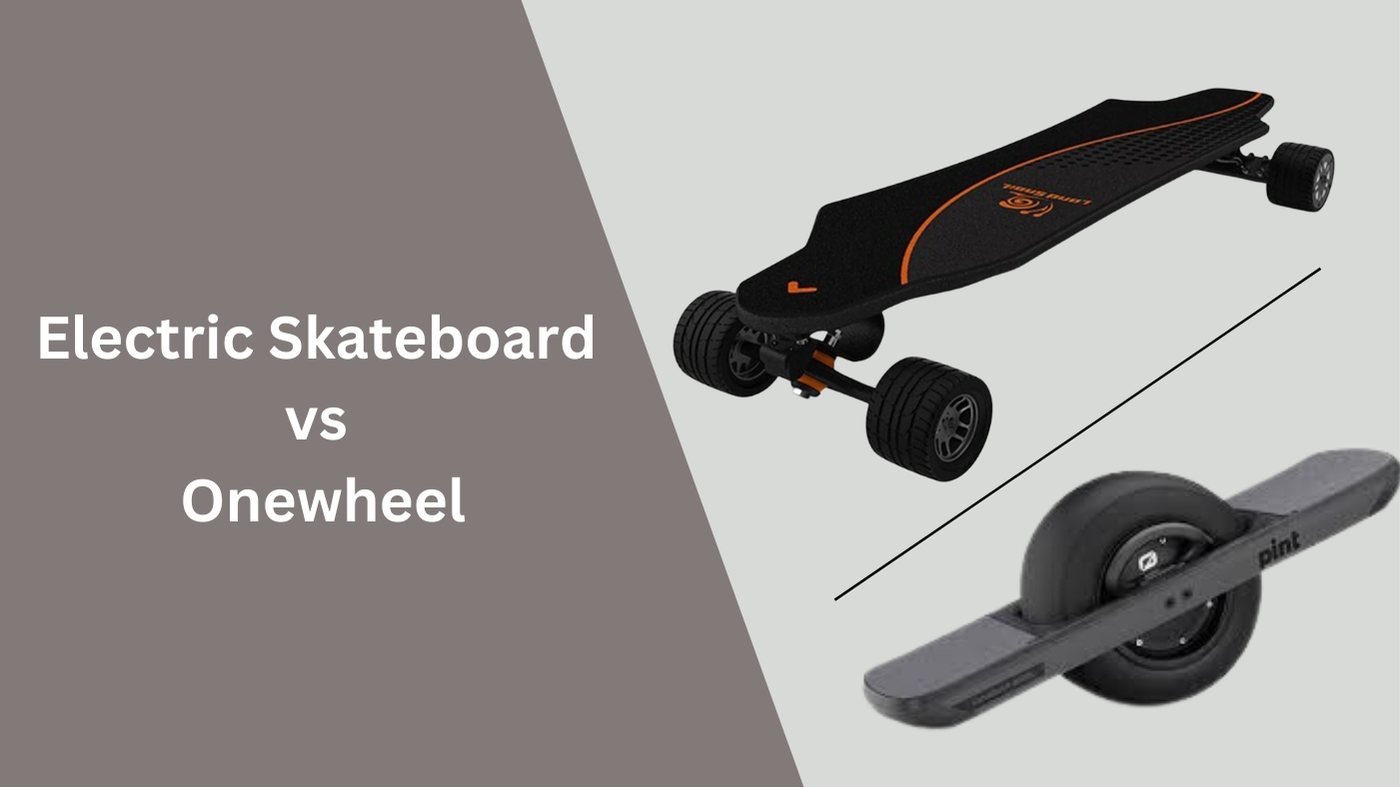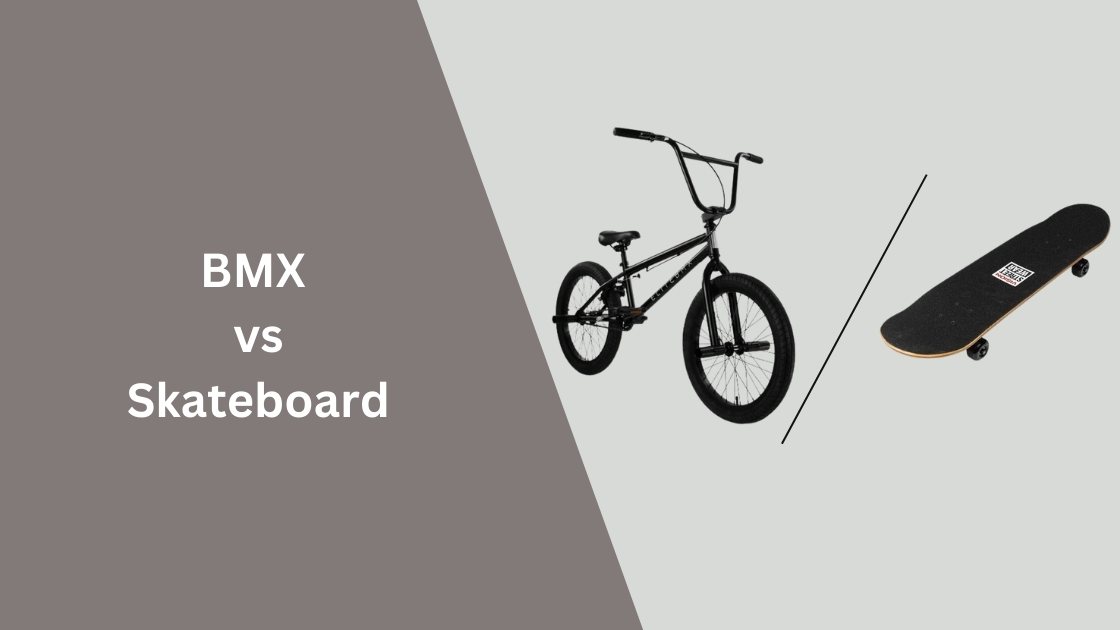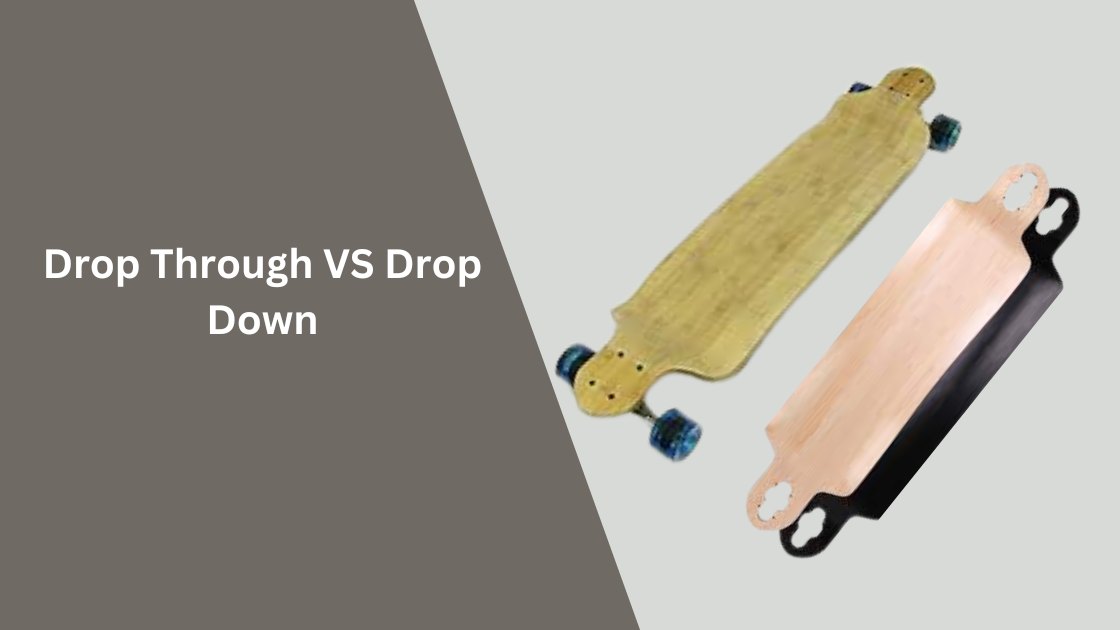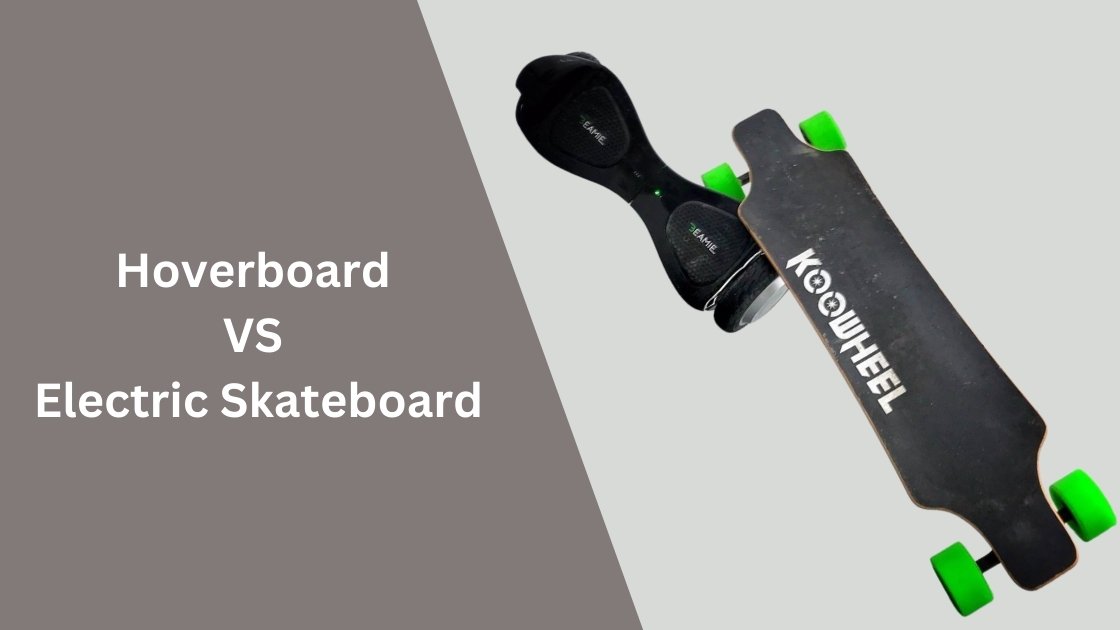As someone who is always on the lookout for fun and innovative ways to get around, I’ve been interested in electric skateboard vs Onewheel for a while now. Both of these personal transportation devices offer a unique and exciting way to get around, but they also have some differences that make them better suited for certain situations.
In this article, I’ll take a closer look at electric skateboards and Onewheels to help you decide which one is right for you. I’ll cover the pros and cons of each, as well as how they compare in terms of performance, cost, and other factors. By the end, you should have a better understanding of which option is best for your needs.
Overview of Electric Skateboards VS Onewheel
| Feature | Electric Skateboard | Onewheel |
| Price | Typically less expensive | Typically more expensive |
| Ease of use | Easier to learn to ride | More difficult to learn to ride |
| Speed | Typically faster | Typically slower |
| Range | Typically longer range | Typically shorter range |
| Durability | Less durable | More durable |
| Maneuverability | More maneuverable | Less maneuverable |
| Safety | Considered safer | Considered less safe |
| Legality | Electric skateboards are legal in most places | Onewheels are legal in some places |
| Ideal use | Tricks, downhill, and long distances | Commuting, short trips, and casual riding |
Before we dive into the details of electric skateboards and Onewheels, let’s take a quick look at what each of these devices is and how they work.
Electric Skateboards
Electric skateboards are a type of personal transportation device that is powered by an electric motor. They typically have a long, narrow deck and four wheels, and are controlled by a remote or smartphone app.
To ride an electric skateboard, you stand on the deck and use your weight to control the acceleration and direction of the board. The electric motor provides additional power, allowing you to reach speeds of up to 20 mph or more.
Onewheels
Onewheels are a type of self-balancing electric scooter that is powered by a single wheel. They have a small platform for the rider to stand on and are controlled by leaning your body in the desired direction.
Onewheels are unique in that they offer a feeling of surfing or snowboarding on land. They can reach speeds of up to 20 mph and have a range of up to 15 miles on a single charge.
Pros and Cons of Electric Skateboards
Now that we have a basic understanding of electric skateboards, let’s take a look at some of the pros and cons of these devices.
Pros of Electric Skateboard
Convenience
One of the biggest advantages of electric skateboards is their convenience. With a top speed of around 20 mph, they’re faster than walking and can easily keep up with traffic on the road. This makes them a great option for commuting to work or running errands around town. continue to write
Portability
Another pro of the best electric skateboards is their portability. Most models are lightweight and easy to carry, so you can take them with you on the bus or train, or store them in a car trunk when you’re not using them. This makes them a great option for people who need a flexible and convenient way to get around.
Fun
In addition to being convenient and portable, electric skateboards are also a lot of fun to ride. With their smooth and effortless acceleration, they provide a thrilling and enjoyable way to get around. Whether you’re cruising down the street or tackling hills and other terrains, electric skateboards offer a unique and exhilarating riding experience.

Cons of Electric Skateboard
Cost
One of the main drawbacks of electric skateboards is their cost. While you can find some budget-friendly models, most electric skateboards are more expensive than traditional skateboards. This can be a significant financial investment for some people, especially if you’re on a tight budget.
Limited Range
Another potential downside of electric skateboards is their limited range. Most models have a range of around 10-15 miles on a single charge, which may not be enough for longer commutes or extended road trips. This means that electric skateboards may not be the best choice for people who need to travel longer distances.
Maintenance
Like any electric device, electric skateboards require regular maintenance and upkeep to stay in good working order. This can include tasks like charging the battery, cleaning and lubricating the wheels and bearings, and other tasks. While these maintenance tasks are typically easy to do, they can be time-consuming and add to the overall cost of ownership.
Pros and Cons of Onewheels
Now let’s take a look at the pros and cons of Onewheels.
Pros of Onewheels
Unique Riding Experience
One of the biggest advantages of Onewheels is the unique riding experience they offer. With their single wheel and self-balancing technology, Onewheels provide a feeling of surfing or snowboarding on land. This makes them a lot of fun to ride and provides a refreshing alternative to traditional modes of transportation.
Portability
Like electric skateboards, Onewheels are also portable and easy to carry around. Most models weigh around 25 pounds and can be easily carried on public transportation or stored in a car trunk when you’re not using them. This makes them a convenient and flexible option for people who need to get around.
Off-Road Capability
Another pro of Onewheels is their off-road capability. With their large, air-filled tire and rugged construction, Onewheels can handle a variety of terrain, including grass, gravel, and even sand. This makes them a great option for people who want to explore off-road trails and other rough terrains.

Cons of Onewheels
Cost
Like electric skateboards, Onewheels are also more expensive than traditional modes of transportation. Most models cost several hundred dollars or more, which may not be affordable for everyone.
Limited Range
Onewheels also have a limited range, with most models able to go up to 15 miles on a single charge. This may not be enough for longer commutes or extended road trips, so Onewheels may not be the best choice for people who need to travel longer distances.
Learning Curve
Another potential drawback of Onewheels is the learning curve. While they’re relatively easy to ride once you get the hang of them, they can be intimidating for beginners. It can take some time and practice to get comfortable balancing on a single wheel and controlling the device with your body movements.
Comparison of Electric Skateboard VS Onewheel
| Aspect | Electric Skateboard | Onewheel |
| Power | Electric skateboards are more powerful and have a higher hill climb rate. | Onewheel may have limitations in climbing hills. |
| Speed | Electric skateboards offer varying speeds depending on the model. | Onewheel Pint has a top speed of 16 mph, while Onewheel XR reaches around 19-20 mph. |
| Off-road Capability | Electric skateboards with all-terrain (AT) wheels can provide off-road capability. | Onewheel is designed to handle different terrains and obstacles. |
| Braking System | Electric skateboards typically have responsive brakes controlled by the remote. | Onewheel’s brakes are controlled by body weight and leaning back. |
| Riding Experience | Electric skateboards may require a learning curve but offer a fun riding experience. | Onewheel offers a unique and enjoyable riding experience. |
| Weight | Electric skateboards weigh around 25 lbs. | Onewheel weighs around 27 lbs. |
| Price | Electric skateboards and Onewheel are in the premium tier of consumer boards, with varying prices. | Electric skateboard prices may vary depending on the model, while Onewheel XR is priced at $1799. |
Now that we’ve looked at the pros and cons of electric skateboards and Onewheels, let’s compare the two devices to see which one might be the best fit for you.
Cost
One of the main differences between electric skateboards and Onewheels is their cost. In general, Onewheels tend to be more expensive than electric skateboards, with most models costing several hundred dollars or more. Electric skateboards, on the other hand, can range in price from around $200 to over $1,000, depending on the features and quality of the board.
Range
Both electric skateboards and Onewheels have a limited range, with most models able to go around 10-15 miles on a single charge. However, electric skateboards typically have a slightly longer range than Onewheels, so they may be a better choice for people who need to travel longer distances.
Terrain
When it comes to terrain, electric skateboards and Onewheels have some differences. Electric skateboards are generally better suited for smooth, paved surfaces, while Onewheels are more capable of handling off-road terrain. So, if you plan on tackling grass, gravel, or other rough terrain, a Onewheel might be the better choice.
Riding Experience
Finally, the riding experience of electric skateboards and Onewheels is quite different. Electric skateboards offer a smooth and effortless ride, with the electric motor providing additional power to the wheels. Onewheels, on the other hand, offer a more unique and immersive experience, with the rider using their body movements to control the direction and speed of the device.
So, if you’re looking for a traditional riding experience, an electric skateboard might be the better choice. But if you’re looking for something more unique and immersive, a Onewheel might be more up your alley.
Conclusion
In conclusion, both electric skateboards and Onewheels are innovative and fun personal transportation devices that offer a unique and convenient way to get around. However, they also have some differences that make them better suited for certain situations.
If you’re looking for a traditional riding experience and a device that is more portable and convenient, an electric skateboard might be the better choice. However, if you want something more unique and capable of handling off-road terrain, a Onewheel might be the way to go.
Ultimately, the decision between an electric skateboard and a Onewheel will come down to your personal preferences and needs. By considering the pros and cons of each device, you should be able to make an informed decision that is best for you.
More Posts




